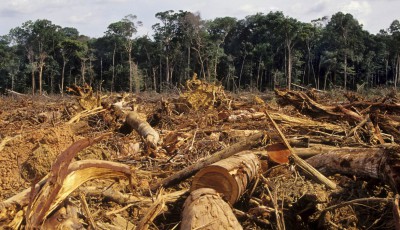Vertical Farming Can Provide Needed Crops to Water-Scarce Regions
By Keith White
October 28, 2015 – California, an area highly publicized for its severe water woes, agriculture alone uses 80 percent of the state’s water supply — yet farmers are forced to use less water and sacrifice crops for the good of the masses.
When water scarcity affects the agriculture industry, the effects are not just felt regionally. Eight hundred fifty million people worldwide go to bed hungry already, which will only increase without a better solution to the current water-intensive agricultural process. Vertical farming, a process that allows farmers to grow produce year round in a controlled climate, has shown great promise to be the solution we’re looking for.
Vertical farming has grown into a $9 billion a year industry as technology continues to improve the way we grow our food. One technology in particular that elevates a vertical farming structure’s value is atmospheric water generation (AWG) — the production of water from humidity that’s already in the air by bringing it to dew point and filtering it for collection and consumption.
This technology is both cost-effective and environmentally friendly, as it alleviates dependency on natural water resources because it forms a continuous water cycle within the structure. The humidity is collected and filtered into water, which is then used to nurture the plants, and in turn sent back into the atmosphere inside the structure where it is harvested again and again.
Pairing atmospheric water generation with a closed-loop structure creates a turnkey greenhouse solution that can control humidity and temperature within the structure while providing a clean water source for agricultural or consumption uses. This is an invaluable resource for many regions across the globe that struggle with water scarcity, with great potential to drastically improve circumstances in the following three areas:
Large Scale Agriculture
Conventional agriculture practices have proven to be rather unsustainable. Farmers already lose a ton of crops due to different hardships related to bugs or weather. New Jersey farmers lose $290 million annually from direct crop loss or damage caused by agricultural pests, and just this past summer Indiana farmers lost $475 million due to far too much precipitation. In states where there are harsh winters that prevent farming all year round, it becomes increasingly important to get the most out of the months optimal for farming.
With vertical farming, farmers can ensure that their crops will grow year-round and in an environment best suited for growth. They will no longer have to worry about harmful weather conditions or pests, and they will see a significant increase in their yield. Farmers will get a significant return on investment as they will be able to sell more product while seeing decreased waste, and will not have to pay for a water source because atmospheric water generation will drastically reduce their water footprint.
Disaster Relief
The impending El Niño is expected to leave four million people across the Pacific suffering from food or clean water scarcity. By deploying vertical farming structures in key areas, that number could see a significant decrease with their ability to provide produce and a renewable source of potable water without relying on any external resources.
When an area suffers from a natural disaster such as El Niño, an earthquake, or a wildfire, these structures can be quickly set up in emergency situations to provide citizens with food and water in a short period of time. Assembly takes just a couple of days, with water production shortly after and a food source within a week. Since these structures have everything needed for plant growth already included, you eliminate dependency on having food/water transported to the area in need, which is especially important if the area is or has become inaccessible.
Developing Nations’ Usage
Many developing nations have no stable food source due to a variety of issues. For example, the Association of Southeast Asian Nations (ASEAN) is dealing with an increase in surface and ground water pollution, not to mention that one-third of their agricultural areas are located in potential flood zones, where others are vulnerable to droughts. Because of the unsanitary condition of the available water, food production is greatly hindered.
Vertical farming structures will be able to provide a sustainable source of food that could feed a village, and could help ASEAN countries keep up with the ever-increasing demands of their communities. With the ability to supply food for the community rather quickly, and the AWG technology providing a clean and reusable source of water that can be used for the crops as well as drinking water, vertical farming has the potential to save lives in these areas.
Whether it’s a disaster area or a location with harsh weather conditions, no one should be without resources like food and water. Vertical farming applications can lessen the strain of this global issue, which is why they are being looked at as a solution to agricultural woes in harsh climate environments and urban areas, as well as a viable option to traditional farming in areas suffering from water scarcity.
The market opportunity for vertical farming will only continue to grow, with the technology saving money and potentially lives in the long run because of its sustainability.
Keith White is the founder and CEO of Ambient Water, an atmospheric water generation technology company providing solutions that produce water from the humidity in the air. Its flagship systems include the Ambient Water 400, which is capable of producing up to 400 gallons of clean water per day. This article first appeared in Environmental Leader October 28 and is reprinted here with the kind permission of the author.







